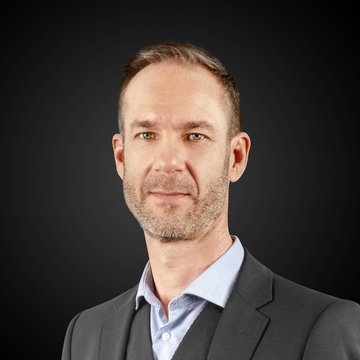Advantage Through Research
Advantage Through Research
Fruitful Cooperation of Sience and Industry
Beyond Borders
Collaborative research projects involving research institutions and commercial enterprises provide valuable insights for all partners. Often, the results can be transferred directly into everyday production.
OEM orders make up a large part of the work performed by our R&D department. As an innovation-oriented company, LASER COMPONENTS also supports practice-oriented research projects and works closely with universities and research institutes. Scientists gain new insights into how nature is connected, and these insights open new technological possibilities for manufacturing companies like LASER COMPONENTS. Many of our team members still benefit today from the know-how they have acquired during their work at renowned research institutes and continue to maintain active relationships with the academic world.
The professional exchange at conventions and conferences not only helps them to expand their personal scientific networks. They also gain new impetus for research, which is ultimately reflected in our products.
A good example of the close cooperation between science and industry is the PluTO+ project funded by the German Federal Ministry of Education and Research, in which the Ruhr University of Bochum, the Laser Zentrum Hannover (Laser Center in Hanover), and the Leibniz Institute for Plasma Research and Technology in Greifswald were involved.
Plasma-assisted Deposition of Optical Interference Coating Systems
Beyond Borders
The production of optical layers and functional surfaces is regarded as an essential key technology in the development of highly integrated optical components. To obtain high-quality and precise coatings, the industry relies on plasma-assisted processes such as plasma ion-assisted deposition (PIAD), which is used, for example, in the production of optical interference coatings. In this process, high and low refractive metal oxides are alternately deposited on the optics. Some of these coatings can be just a few nanometers thick; the total thickness can reach up to 5 µm, depending on the complexity of the coating design.
The dielectric coating materials are evaporated in a high vacuum with an electron beam and condense on the substrates. In a PIAD system, a plasma source provides additional kinetic energy to the molecules, thus making it possible to achieve denser layers. This prevents a porous layer structure in which water could accumulate. This is considered the main cause of the undesired spectral shift.
“The mechanical and optical properties of a dielectric layer produced via the PIAD process depend heavily on the energy input of the plasma,” explains Dr. Sina Malobabic, who heads the optical technology projects in the interdisciplinary R&D team. “Drifts and fluctuations in the plasma source have a negative effect on the reproducibility of the layer properties.”
The aim of PluTO+ was to detect these fluctuations, increase the stability of the coating processes, and thus increase the yield and quality of the PIAD process in the long term. For this purpose, scientists at the Ruhr University of Bochum developed a multipole resonance probe (MRP) with which the electron density in the plasma can be monitored. This allows deviations from the target value to be recorded diagnostically and corrected in real time as part of an in-situ monitoring system.
Diagnostics where Plasma Enters the Layer-forming Processes
Beyond Borders
The suitability of the probe in an industrial environment was tested at LASER COMPONENTS’ PIAD facility in Olching. As the person responsible for the project on site, Dr. Malobabic carried out all tests and the necessary measurements herself. “Even if the tests are carried out under production conditions, this does not mean that the results are obtained automatically,” she explains. “To make even the smallest deviations spectrally visible quickly, we chose a particularly complex coating design that is rarely used in day-to-day operations. To carry out the measurements without disturbing the production plans for customer orders, additional coating runs had to be planned. In such cases, a weekend or two may have to be sacrificed.” Plus, it is necessary to coordinate with numerous project partners who are scattered all over the country.
All in all, however, this effort was worthwhile: First of all, the employees at the department of theoretical electrical engineering in Bochum were able to conclude with satisfaction that their probe could withstand the demanding conditions in a plasma-supported high-vacuum facility in the long term and provided reliable data for the entire duration of the project.
During the measurements, Dr. Malobabic was able to prove that even with otherwise identical operating parameters, considerable differences in plasma properties can exist.
In the meantime, the LASER COMPONENTS team is investigating the influence of plasma stabilization on the mechanical properties of the coating systems (e.g., on the laser damage threshold of an optical system). “Such collaboration between research and industry always has advantages for all parties involved,” concludes Dr. Lars Mechold, technical director at LASER COMPONENTS. “Hardly any PIAD system today is equipped with a plasma probe. For us, this is an important opportunity to further increase the quality of our customized laser optics. We have already recognized a crucial practical advantage:
With the data supplied by an MRP, we can better plan the cleaning intervals for this system. In figures, this means an increase in efficiency of around 10%.”
LASER COMPONENTS Nordic - Your competent partner for optical and optoelectronic components in Sweden, Norway, Finland, Denmark, and Iceland.
Welcome to LASER COMPONENTS Nordic AB, your expert for photonics components. Each product in our wide range of detectors, laser diodes, laser modules, optics, fiber optics, and more is worth every Crown (SEK). Our customized solutions cover all conceivable areas of application: from sensor technology to medical technology. You can reach us here:
Box 14001 / Skårs led 3
SE-400 20 Göteborg
Sweden
Phone: +46 (0)31 703 7173
Email: info(at)
